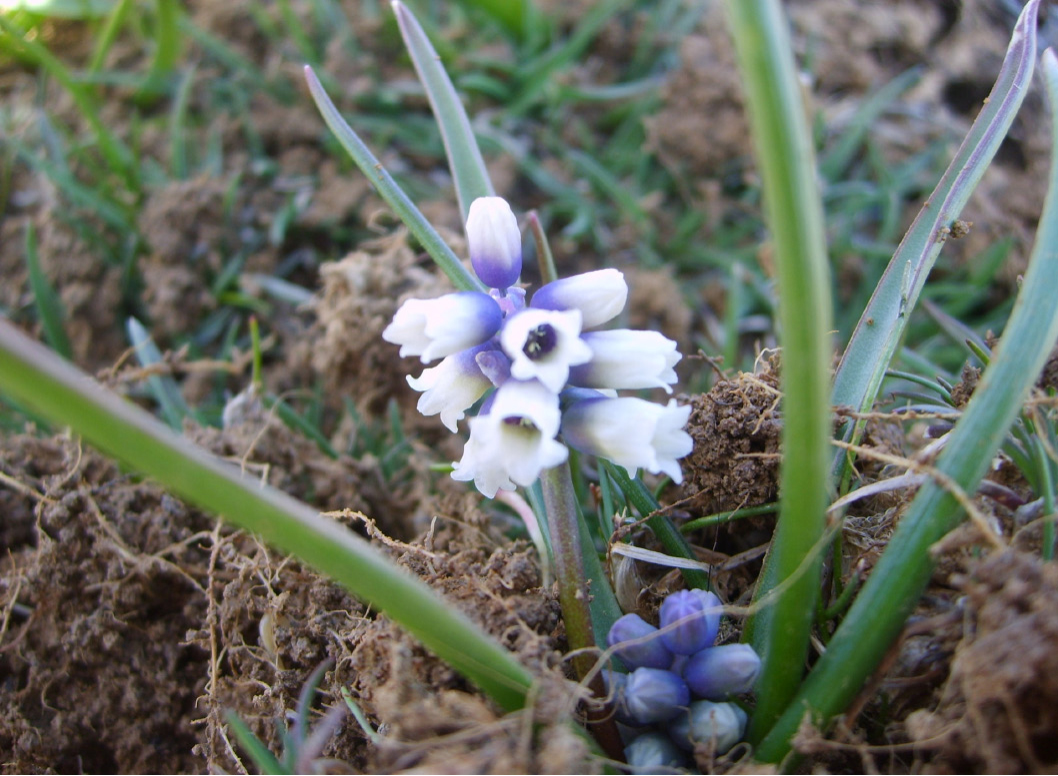Anatomical characteristics of Muscari vuralii Y. Bağcı & Doğu (Hyacinthaceae)
Abstract
Muscari vuralii Y. Bağcı & Doğu has been recently published rare endemic species growing in South Anatolia. In the present study, anatomical features of this species were determined. The studies were carried out on tranverse sections of scapes and leaves, and surface sections of the leaves. According to the results, the leaves are equifacial and amphistomatic with anomocytic stomata. There is 1-layered palisade parenchyma under each epidermis, and richly developed 8-10-layered spongy parenchyma between the two palisades. Some spongy parenchyma cells include raphide crystals. Vascular bundles are located in equal intervals in spongy parenchyma. In the scape, the cortex is multilayered and the vascular bundles are located in two rows.
References
Cutter E.G. 1971. Plant anatomy: Experiment and interpretation, Part 2, Organs. Addison-Wesley Publishing Company, London.
Dahlgren R.M.T., Rasmussen F.N. 1983. Monocotyledon evolution: Character and phylogenetic analysis. Evol. Biol. 16: 255–395.
Dahlgren R.M.T. Clifford H.T., Yeo P.F. 1985. The Families of the Monocotyledons. Springer-Verlag, Berlin.
Doğu S., Bağcı Y. 2009. Muscari vuralii sp. nov. (Liliaceae/Hyacinthaceae) from South Anatolia, Turkey. Nord. J. Bot. 27: 243–246.
Doğu S., Dinç M., Ünal A. 2011. Anatomical characteristics of Bellevalia mathewii Özhatay & Koçak (Liliaceae). Biodicon 4 (3): 14–18.
Eker İ., Koyuncu M. 2008. Muscari babachii sp. nov. (Hyacinthaceae) from south Anatolia. Nord. J. Bot. 26: 49–52.
Engler A., Prantl K. 1930. Die Natürlichen Pflanzenfamilien. Volume 15a. Verlag von Wilhelm Engelmann, Leipzig.
Gürsoy M., Şık L. 2010. Batı Anadolu’daki Muscari armeniacum Leichtlin Ex Baker ve Muscari neglegtum Guss. Türleri Üzerine Karşılaştırmalı Anatomik Araştırmalar. C.B.U. J. Scie. 6: 61–72
Kahraman A., Celep F., Doğan M., Koyuncu M. 2010. Morpho-anatomical studies on Bellevalia paradoxa Boiss. belonging to Liliaceae. Aust. J. Crop. 4 (3):150–154
Kandemir N., Ergen Akçin O., Cansaran A. 2000. A morphological and anatomical investigation on some geophytes distributed in the vicinity of Amasya. Herb. J. Syst. Bot. 7 (2):127–147.
Miadokova E., Masterova I., Vlckova V., Duhova V., Toth J. 2002. Antimutagenic potential of homoisoflavonoids from Muscari racemosum. J. Ethnopharmacol. 81: 381–386.
Nakano M., Tanaka S., Kagami S., Saito H. 2005. Plantlet regeneration from protoplast of Muscari armeniacum Leichtl. ex Bak. Plant Biotechnol. 22: 249–251.
Prychid C.J., Rudal P.J. 1999. Calcium oxalate crystals in motocotyledons: A review of their structure and systematics. Ann. Bot. 84: 725–739.
Pohl T.S., Crouch N.R., Mulholland D.A. 2000. Southern African Hyacinthaceae: Chemistry, bioactivity and ethnobotany. Curr. Org. Chem. 4: 1287–1324.
Satıl F., Akan H. 2006. Liliaceae Familyasından Bazı Endemik ve Nadir Geofitler Üzerinde Anatomik Araştırmalar. Ekoloji 15 (58): 21–27.
Stevens P.F. 2001. Onwards. Angiosperm Phylogeny Website. Version 9, June 2008 [and more or less continuously updated since]. www.mobot.org/MOBOT/research/ APweb/.
Stedje B. 1996. Hyacinthaceae. In: Polhill R.M., Balkema A.A. (eds.), Flora of Tropical East Africa. Kew, Rotterdam.
Uysal I. 1992. Kazdağı (B1 Balıkesir) Endemik Bitkileri Üzerinde Morfolojik ve Ekolojik Araştırmalar I “Allium flavum L. subsp. flavum var. minus Boiss. ve Muscari latifolium Kirk.”. Turk. J. Bot. 16: 299–310.
Vardar Y. 1987. Botanikte Preparasyon Tekniği: 25–26. Ege Üniversitesi Fen Fakültesi Basımevi.


This work is licensed under a Creative Commons Attribution-NonCommercial-NoDerivatives 4.0 International License.
The journal is licensed by Creative Commons under BY-NC-ND license. You are welcome and free to share (copy and redistribute the material in any medium or format) all the published materials. You may not use the material for commercial purposes. You must give appropriate credit to all published materials.
The journal allow the author(s) to hold the copyrights and to retain publishing rights without any restrictions. This is also indicated at the bottom of each article.





